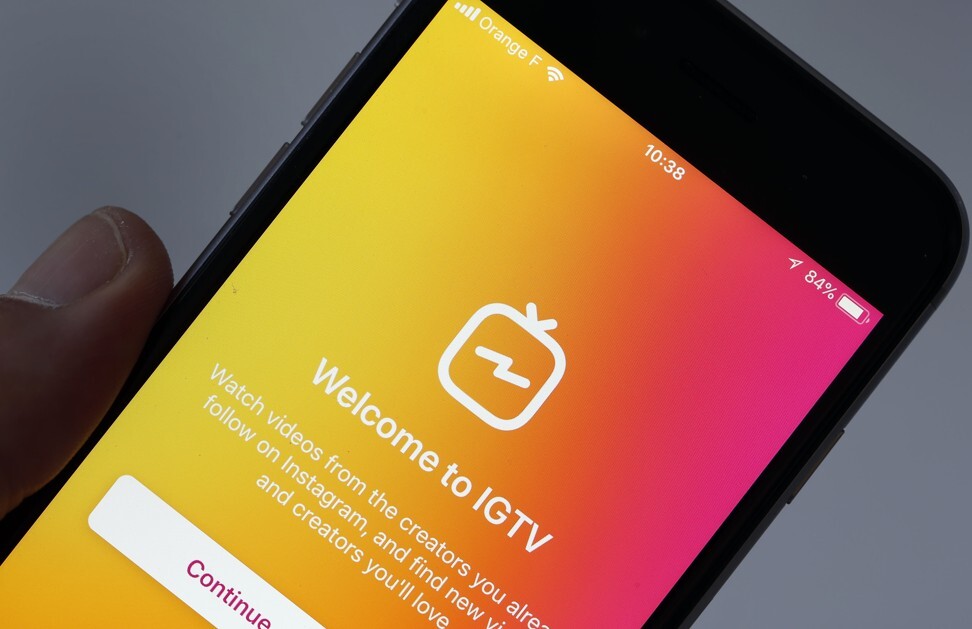
YouTube or Instagram? The best place to launch a travel channel, and how to maximise your views and likes
- You may get more views on YouTube because of its inclusion in Google search results, but IGTV on Instagram is an ideal platform for vlogging beginners
- Videos up to an hour long can be added, and soon influencers will be able to make money from their IGTV uploads the same way YouTubers do
Starting an online travel video channel might sound like a daunting task, but if you have old travel clips on your phone, now is the ideal time to learn the basics for when international borders finally reopen.
The process can be as simple as you make it. Where you want your channel to go, and the amount of time and resources you want to spend on it, are things that will influence your approach, too.
Instagram’s video sharing platform, Instagram TV (IGTV), is a worthy launch pad for a travel channel thanks to its relative ease of use.
IGTV versus YouTube

YouTube receives 3 billion searches a month, which makes its search-engine optimisation value (the higher the value, the more traffic or hits you get) hard to beat. The site is saturated with travel vloggers, but it is still the best place to get your videos seen and to make money from them.
Of course, you can post the same content to both channels.
Selfie video camera the Idolcam is perfect for vloggers
The basics
It has been possible for some time now to post short videos – up to a minute in length – on your Instagram feed, and live content that stays up for 24 hours, but these clips tend to be flipped through quickly and without thought.
A minute can seem like an eternity if the content is not engaging from the get go, yet is too short a time for a video of any significance. This is where IGTV comes in.

If you’re just starting out, you will first need to access the IGTV video page, which can be found through the search page on Instagram.
Uploading is fast and easy. Each clip must be more than a minute long, and if the video is uploaded from a mobile device, it must be less than 10 minutes long. Videos of up to an hour in length can be uploaded from a desktop computer.
There are no editing tools within the app, but captions and titles can be added to your videos. To tag other accounts, list them in the comments, where you should also add relevant hashtags.

You can post a short preview of your video to your main Instagram feed, which you should to do if you want to rack up the views.
Once you’ve posted for the first time, an IGTV icon will appear on your Instagram homepage (next to the tab for photos you’ve been tagged in) for easier access.
You can create video series, and you can post or send IGTV links to other platforms – including to Facebook. Your creations can also be embedded on a website or blog post, although this is only possible from a computer.

Formats and further sharing
Although Instagram is best used when your phone is in portrait (or vertical) mode, IGTV allows you to view video content in landscape, which is something few viewers bother to do for short videos.
IGTV videos are much smaller when viewed on a regular feed in portrait, but they are still watchable and are not trimmed at the sides, which means viewers watching on the fly still get to see everything with minimal effort.
How to use Instagram’s new IGTV app
Many editing apps and desktop software packages allow for video export in either portrait or landscape mode. If a video has been shot in landscape, you can crop it for better viewing in portrait mode while editing. This allows you to export the same video to both IGTV (portrait) and YouTube (landscape).
Shooting in portrait mode works well for walk-arounds and single-clip videos of markets or temples, for example, and you can shoot, edit and post within minutes. This immediacy is where IGTV really comes into its own.
The platform has its limitations, and the inability to directly monetise videos on Instagram may have kept established travel vloggers at bay. However, a monetisation scheme is being introduced, which may draw them away from YouTube, and Instagram is less cluttered and more accessible. If you’re already a popular Instagramer, you’ll have a ready-made audience, too. Its video potential is huge.
